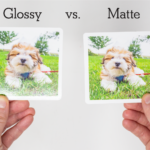I. Understanding Upcycling: Definition and Benefits
II. The Process of Recycling: How It Works
III. Upcycling vs. Recycling: Key Differences and Environmental Impact
Understanding Upcycling: Definition and Benefits
Have you ever looked at an old piece of furniture or a worn-out piece of clothing and thought, “This could be something amazing again!”? If so, you’ve already dipped your toes into the world of upcycling! Upcycling is a creative way to breathe new life into items that might otherwise be tossed aside. But what exactly does it mean, and why should we care? Let’s dive in!
What is Upcycling?
At its core, upcycling is about transforming waste materials or unwanted products into something new and often more valuable. Unlike traditional recycling—which often breaks materials down to create something entirely different—upcycling involves reusing items while maintaining their original form, just with a fun twist!
For example, turning an old ladder into a bookshelf or converting glass jars into decorative candle holders are classic upcycling projects. The beauty of upcycling is that it allows your creativity to shine while also being gentle on the environment.
Why Should We Embrace Upcycling?
Now that we have a handle on what upcycling is, let’s explore some of the benefits that make it a worthwhile endeavor:
- Environmental Impact: Upcycling helps to reduce waste that would otherwise end up in landfills. By giving items a second chance, we can significantly lower our carbon footprint and minimize the need for new resources.
- Cost-Effective: Why spend money on new home décor or trendy fashion items when you can create them from what you already have? Upcycling is often cheaper than buying new items, saving you some cash while unleashing your creativity!
- Unique Style: Upcycled items bring a distinctive touch to your space or wardrobe. Each piece is one-of-a-kind, reflecting your individual style and personality. You can even brag a little when guests admire your custom creations!
- Skill Development: Engaging in upcycling projects can also teach you new skills. Whether you’re learning to sew, paint, or work with tools, you’ll gain confidence and practical abilities that can serve you well in everyday life.
Where to Start?
Feeling inspired? If you’re ready to jump into the world of upcycling, start small. Here are a few simple projects to get your creative juices flowing:
- T-shirt Tote Bags: Turn an old t-shirt into a stylish tote bag—no sewing required!
- Furniture Makeover: A little paint and some new hardware can transform a tired old chair into a stunning statement piece.
- Jar Organizers: Use old jars to organize everything from buttons to office supplies—practical and pretty!
So there you have it! Upcycling is not just a trend; it’s a fantastic way to practice sustainability, unleash creativity, and even save some money along the way. So, the next time you’re about to toss something out, pause and ask yourself: could this be upcycled? You just might discover a treasure waiting to be reimagined!
The Process of Recycling: How It Works
Hey there! Have you ever stopped to wonder what really happens to your recyclables after you toss them in the bin? It might surprise you to learn that recycling is a fascinating process, filled with steps that transform your discarded items into new, useful products. Let’s dive into the world of recycling and see how it all works!
1. Collection and Sorting
The recycling journey begins right in your neighborhood. Once you’ve tossed your recyclables into the bin, they are collected by your local waste management service. But before they can hit the recycling center, there’s an important step: sorting!
- Single-stream recycling: In many areas, you can place all recyclable materials together. The materials are sorted later at a facility.
- Source-separated recycling: Here, you’ll need to separate items like paper, plastic, glass, and metals yourself before collection.
At the recycling facility, workers or machines sort through the materials to ensure that only recyclable items make it through. This is crucial because contamination (like food residues) can spoil an entire batch!
2. Cleaning and Processing
Once sorted, the next step is cleaning. Items like plastic bottles and glass jars are washed to remove any leftover food or liquids. This is where you can really appreciate how important it is to rinse out your containers before recycling. A clean item is much easier to process and ensures a higher quality end product!
After cleaning, the materials undergo processing. This involves breaking them down into smaller pieces. Let’s take a look at how different materials are processed:
- Plastic: It’s shredded into tiny flakes, which are then melted down to form pellets for making new plastic products.
- Glass: It’s crushed and melted, ready to be formed into new glass containers.
- Paper: It’s pulped and reprocessed into new sheets of paper or cardboard.
- Metals: They are melted and formed into new products, reducing the need for mining new materials.
3. Manufacturing New Products
Okay, so now we have clean, processed materials. What’s next? They are sent off to manufacturers who create new products from these recycled materials. This is where the magic happens! For example, the plastic pellets produced from recycled bottles can be turned into everything from clothing to new containers, while recycled glass can become beautiful jars or even countertops.
4. The Final Step: Reuse
Finally, those newly manufactured products hit the market, ready for consumers like you and me! By buying products made from recycled materials, you’re helping to close the recycling loop, encouraging more recycling and reducing waste.
Why It Matters
So, why should you care about the recycling process? Well, recycling not only conserves natural resources but also saves energy and reduces greenhouse gas emissions. It’s a win-win! By understanding how recycling works, you can make more informed decisions and be an advocate for a sustainable future.
Next time you toss something into your recycling bin, remember the journey it’s about to take. You’re not just getting rid of waste—you’re helping to create a cleaner, greener world!
Upcycling vs. Recycling: Key Differences and Environmental Impact
When it comes to giving our old items a new lease on life, many of us might use the terms “upcycling” and “recycling” interchangeably. However, these two processes are quite different, each offering unique benefits for the environment and our creative spirits. Let’s dive into the key differences and explore how each method impacts our planet.
What is Recycling?
Recycling is the process of taking materials that have already served their purpose and breaking them down so they can be transformed into new products. Think of it as a factory reset for your items. Here’s how it typically works:
- Collection: Items are collected through curbside bins or recycling centers.
- Sorting: These materials are sorted by type—plastic, paper, glass, and metals—ensuring that like materials are processed together.
- Processing: The sorted materials are cleaned and processed into raw materials.
- Manufacturing: Finally, these raw materials are used to create new products.
Recycling helps reduce waste in landfills and conserves natural resources by reusing materials instead of extracting new ones. However, it often requires significant energy and water, and the process may produce emissions that can harm the environment.
What is Upcycling?
On the other hand, upcycling is all about creativity! This process involves taking old or unwanted items and transforming them into something new and, often, more valuable. Rather than breaking materials down, you’re giving them an entirely new function or aesthetic. For example:
- Turning an old ladder into a bookshelf.
- Using wine corks to create a bulletin board.
- Transforming a vintage suitcase into a stylish pet bed.
Upcycling is not just environmentally friendly; it often incorporates a personal touch, leading to unique creations that reflect our individual styles. And guess what? It requires significantly less energy compared to recycling since you’re not breaking down materials but reimagining them.
Key Differences
Now that we’ve explored both terms, what really sets them apart? Here are some key distinctions:
- Process: Recycling involves breaking down materials, while upcycling is about creatively reusing items in their existing form.
- Energy Consumption: Recycling often requires more energy and resources, whereas upcycling tends to be less energy-intensive.
- Outcome: Recycling typically results in products that are similar in function but lower in quality, while upcycling can create entirely new items that might even hold greater value.
- Creative Expression: Upcycling allows for personal creativity and innovation, unlike the more standardized recycling process.
Environmental Impact
Both recycling and upcycling have their merits. Recycling helps alleviate the growing waste problem and lowers the demand for new resources. Upcycling, on the other hand, fosters a culture of creativity and mindfulness about consumption, reducing waste while promoting sustainability.
In conclusion, while recycling is essential in managing our waste and conserving resources, upcycling invites us to think outside the box and find joy in reimagining what we already have. So next time you’re about to toss something out, consider how you might give it a new life instead!










Comments